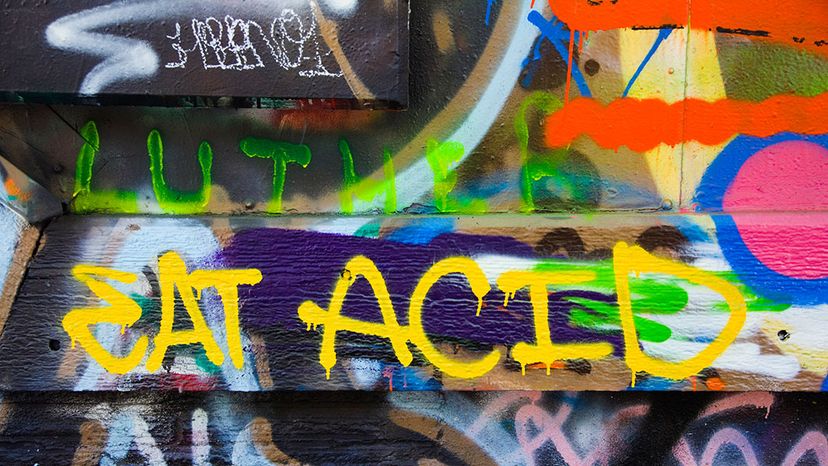
"Turn on, tune in, drop out." That timeless phrase is part of our collective consciousness thanks to writer and psychologist (and noted drug experimenter) Timothy Leary, who gained worldwide fame during the counterculture years of the 1960s. His words were – and still are – often strongly associated with a substance called lysergic acid diethylamide, better known as LSD.
LSD, a powerful psychedelic drug, is often called acid, blotter, California sunshine, dots, Electric Kool-Aid and countless other colorful nicknames, and it's been sold on the streets since the tumultuous years of the early 1960s. And as Leary's words imply, it's a drug that has a fascinating (and sometimes, terrifying) effect on human biology, creating sort of chemically-derived spiritual exploration that shifts mental and emotional perspectives...for better or for worse.
Advertisement
Unlike a lot of drugs, which may require smoking or injecting, LSD is easy to take orally -- it's colorless, odorless and tasteless -- and ingesting just a tiny amount (25 micrograms, or 0.000025 grams, less than the weight of two salt grains) is enough to feel the effects. It's also easy to conceal, since today's doses are usually found on tiny squares of absorbent paper called "blotters" [source: Erowid].
LSD is difficult to detect, because of the small amount ingested and the fact that it's quickly metabolized by the body. Acid is cheap compared to other drugs. A single dose usually costs no more than$10 , and if you're at the right music festival at 2 o'clock in the morning, well, you may find the stuff passed around by jovial partiers for free [source: LSD Abuse Help].
The same things about LSD that would make it popular also make it scary, and we've been warned about its many dangers at one time or another. For example, you may have been told that LSD can "fry" or put holes in your brain, or make you go insane and do dangerous things [source: Brodwin].
Supposedly people have leapt from buildings or overpasses while tripping or have drowned because they thought that they could walk on water. Then, there are the people who consume acid and then think that they've personally transformed into a sandwich...and someone is trying to eat them. In fact, many of the things we've been told about LSD's effects, are myths or exaggerations created to frighten impressionable teenagers [source: Weiss].
The truth is, although LSD has been around for more than 60 years and been taken by thousands upon thousands of people, most people don't really know all that much about it. Although this colorful substance will forever be associated with hippies and the 1960s counterculture movement, LSD was actually first synthesized by researchers attempting to create new medicines. So, let's set aside the hallucinogenic media hype and urban legends, cut through the haze of patchouli incense, and start with LSD's beginnings -- at a lab in Switzerland.